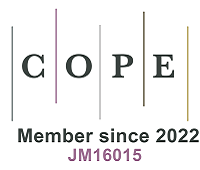Heterogeneous twin structure and spontaneous plastic strain evolution in extruded AZ31 Mg alloy under multi–degree-of-freedom reciprocating torsion–compression
Abstract
The microstructural evolution and mechanical responses under multi-degree-of-freedom reciprocating torsion-compression deformations remain to be fully elucidated, particularly regarding the Swift and inverse Swift effects and their physical mechanisms, which constrain the design and formability of textured Mg alloys. Therefore, the multi-degree-of-freedom reciprocating pre-torsional-compressive loadings along the extrusion direction (ED) were specifically designed. The twinning behaviours and the radial distribution of twin structures were systematically analysed. The driving mechanisms of the Swift and subsequent inverse Swift effects were discussed. Results demonstrated that free end torsion (FET) deformation induced radially linear-gradient twinning structure, while reverse FET loading triggered FET twins detwinning and extensive ![]() tensile twin activation within the basal textures, driving the RFET twin texture further tend towards ED aggregation. FET twins inhibited the nucleation of RFET twins, resulting in the formation of a distinctive inverse-gradient twinning structure. 65 % of the Swift-effect strain under low-strain FET (γ < 0.12) was coordinated by dislocation slip, whereas the misfit strain induced by FET twins accommodated more than 85 % of the axial shortening during γFET = 0.38. RFET-stage axial elongation was governed by detwinning, with subsequent axial shortening attributable to large-scale RFET twin activation.
tensile twin activation within the basal textures, driving the RFET twin texture further tend towards ED aggregation. FET twins inhibited the nucleation of RFET twins, resulting in the formation of a distinctive inverse-gradient twinning structure. 65 % of the Swift-effect strain under low-strain FET (γ < 0.12) was coordinated by dislocation slip, whereas the misfit strain induced by FET twins accommodated more than 85 % of the axial shortening during γFET = 0.38. RFET-stage axial elongation was governed by detwinning, with subsequent axial shortening attributable to large-scale RFET twin activation. ![]() tensile twins dominated initial free rotational compression (FRC) strain, the interactions between the release of residual shear stress and the reverse shear strain component induced by FRC twins results in the circumferential motionlessness during initial FRC. Proliferation of FRC twins promoted cumulative circumferential shear strain component, inducing further macroscopic reverse spontaneous rotation.
tensile twins dominated initial free rotational compression (FRC) strain, the interactions between the release of residual shear stress and the reverse shear strain component induced by FRC twins results in the circumferential motionlessness during initial FRC. Proliferation of FRC twins promoted cumulative circumferential shear strain component, inducing further macroscopic reverse spontaneous rotation.
Keywords
Magnesium alloy, multi-degree-of-freedom, reciprocating torsion, compression, twinning, inverse Swift effect
Cite This Article
Jiao M, Yang X, Liu Z, Li R, Shi B, Peng Y, Chen X. Heterogeneous twin structure and spontaneous plastic strain evolution in extruded AZ31 Mg alloy under multi-degree-of-freedom reciprocating torsion-compression. Microstructures 2025;5:[Accept]. http://dx.doi.org/10.20517/microstructures.2025.105














